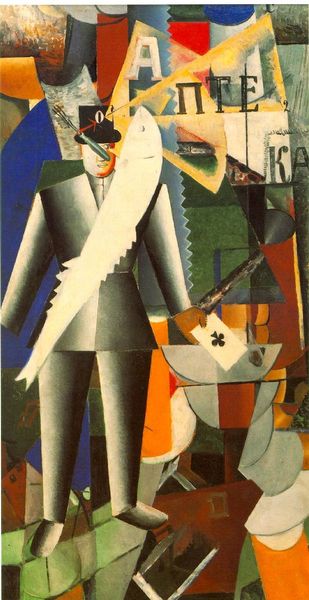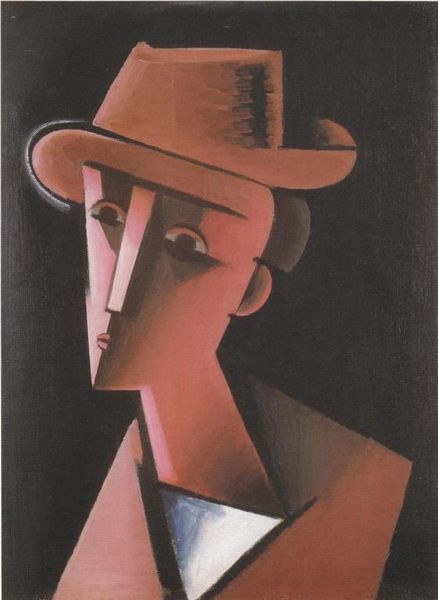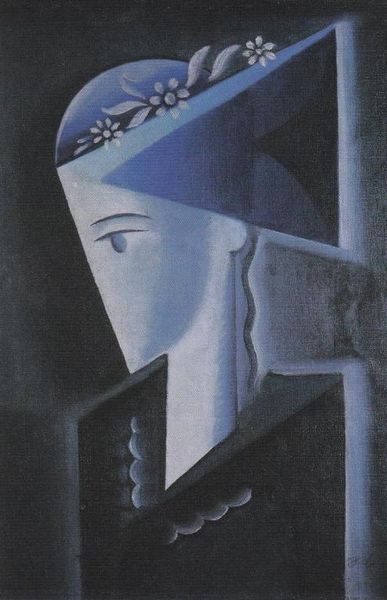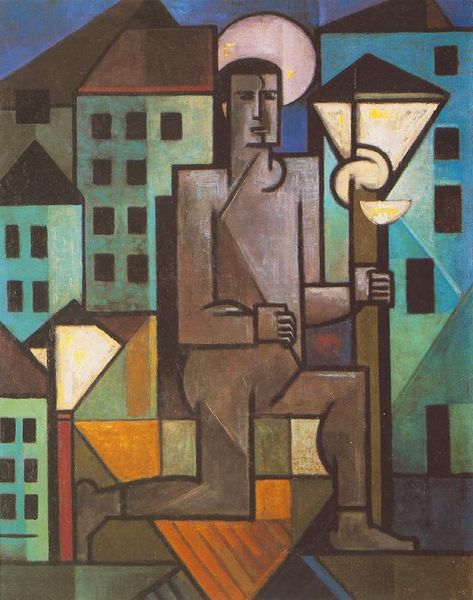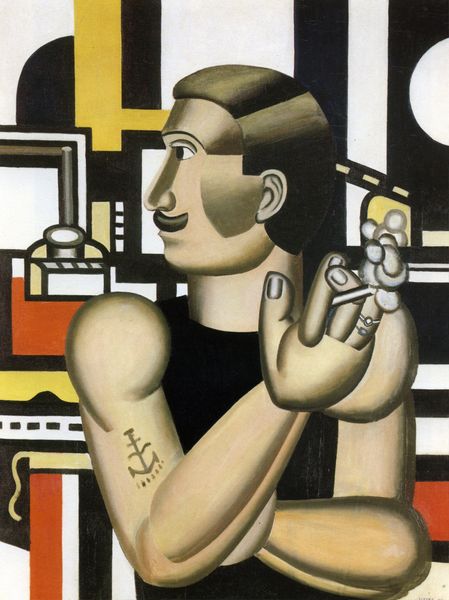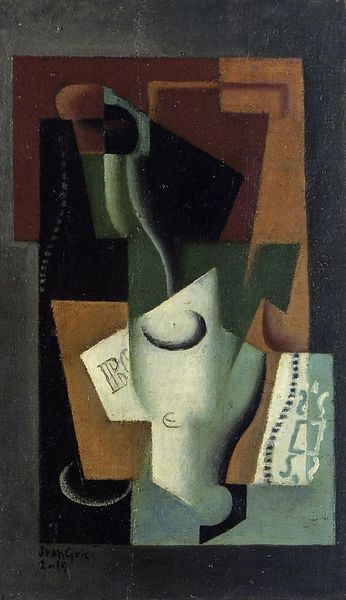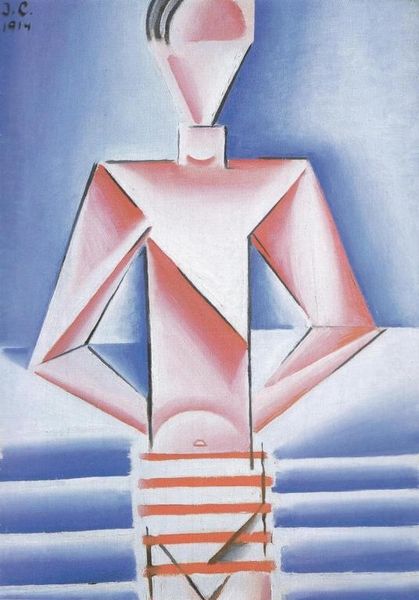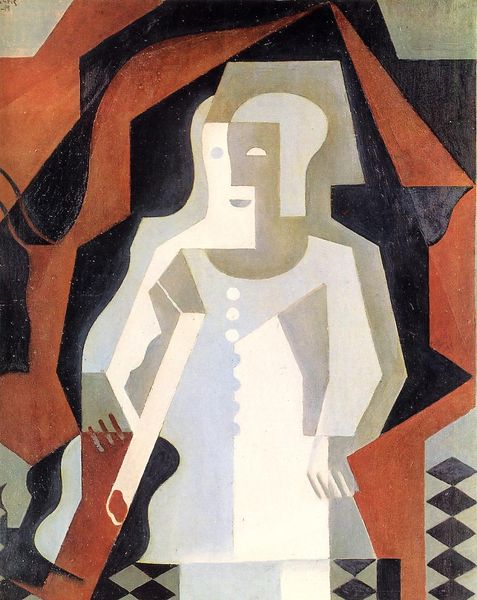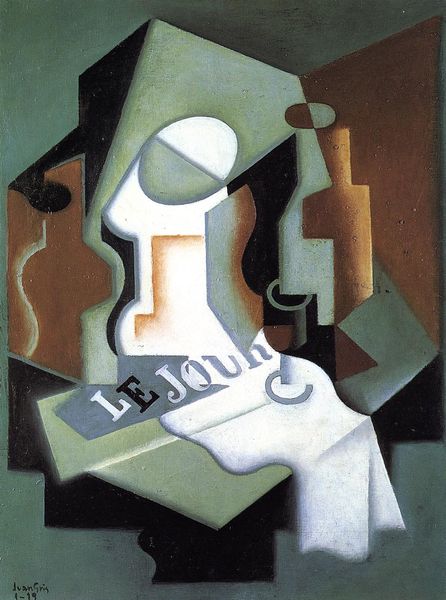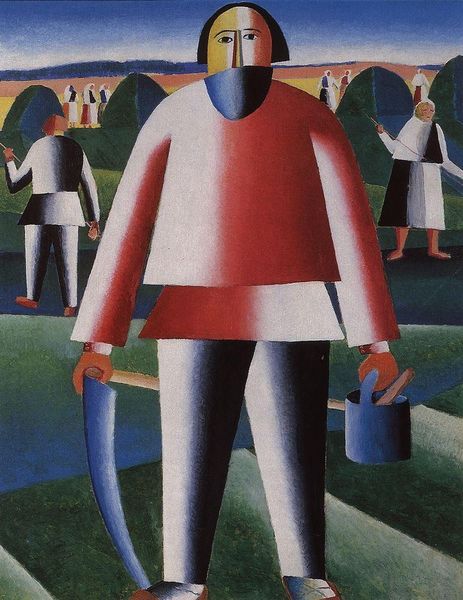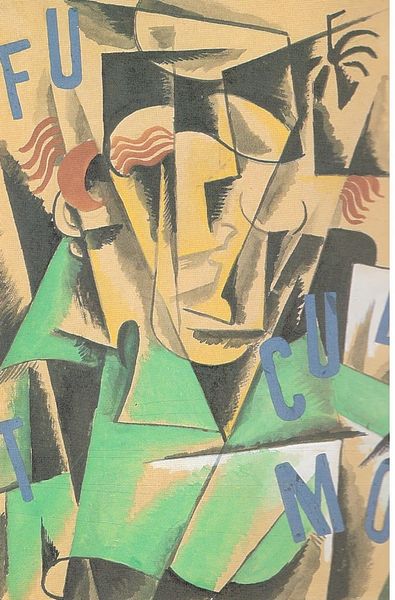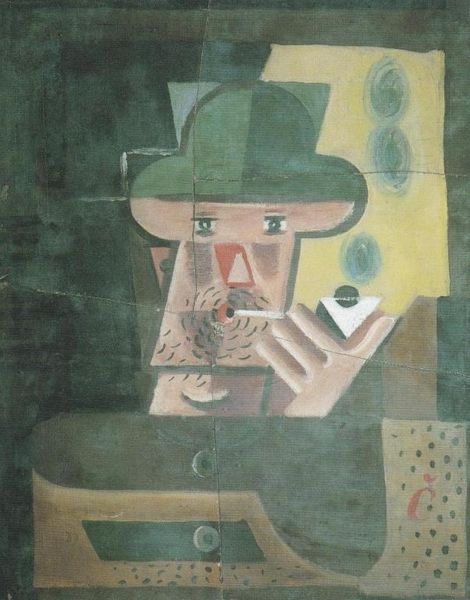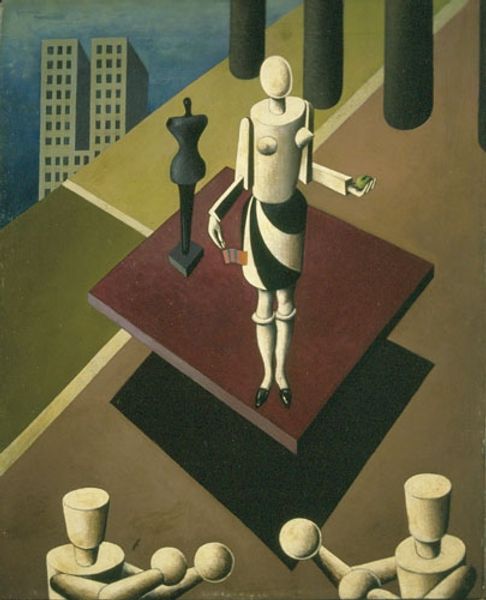
painting, oil-paint
#
portrait
#
cubism
#
painting
#
oil-paint
#
oil painting
#
geometric
#
portrait art
Copyright: Public domain
Curator: This intriguing painting is titled "Man with a Beard" (Muž s plnovousem), a 1917 oil on canvas by Josef Čapek. The artist offers us a captivating plunge into the world of Cubist portraiture. Editor: My first impression? It’s almost theatrical! The muted palette, the sharp angles… it feels like a stage persona, masked and subtly ominous. Curator: Precisely! Note how Čapek employs geometric reduction, fracturing the figure into simplified planes. This deconstruction isn’t merely stylistic; it forces us to actively construct the image, to engage with its underlying structure. Semiotically speaking, the painting denies easy access. Editor: But that fracturing is so…intentional. I see coded elements all over. The repeated squares—his face, the fence to the left—give a sense of confinement. There's lettering above the figure: OPTIK, PAPIYR, ZLATO (optician, papers, gold)… a modern allegory of profession, knowledge and materialism perhaps? Curator: Yes, the lettering! An interesting visual field disrupts the picture plane. We cannot ignore it; its materiality suggests simultaneity and depth. Consider the restricted use of light and shade too; the muted tones of gray and white contribute to an atmosphere of intellectual austerity, drawing focus onto the construction of form. Editor: I wonder if he intended a more profound comment about individuality versus type. The beard, despite its stylization, stands out. He is no mere set of blocks. Also note the stylized lights from buildings in the background. The man is clearly meant to inhabit a complex modernity. Curator: You’re highlighting an ambiguity central to Čapek’s Cubism, this oscillation between figuration and abstraction. It prompts a reconsideration of how we define ‘portraiture’ itself. It certainly feels like Čapek engages with some form of early Structuralist thought. Editor: Ultimately, for me, it evokes the spirit of early 20th-century alienation. What could be seen as the playful abstraction of form, instead feels more like the disintegration of the human. A rather dark vision. Curator: Perhaps… but within that fragmentation lies the creative potential to re-envision both art and the self. Editor: Food for thought.
Comments
No comments
Be the first to comment and join the conversation on the ultimate creative platform.
